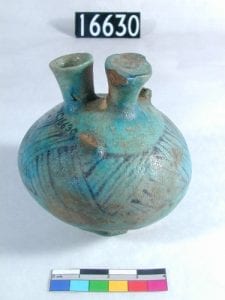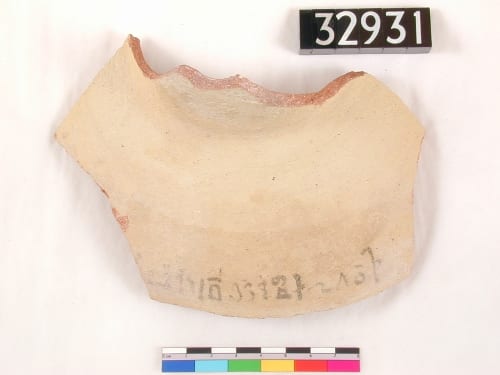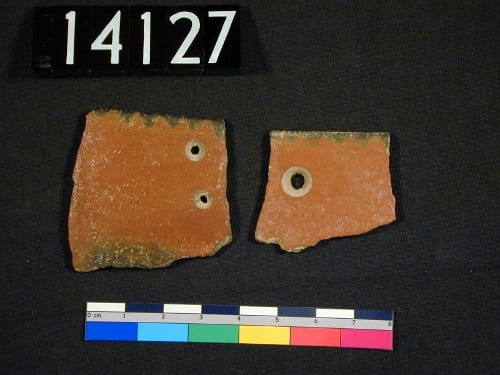Curating the Petrie Museum: Three Object Stories
By Anna E Garnett, on 26 July 2017
I’ve just come to the end of my first month as Curator of the Petrie Museum. While my feet are getting closer to the ground with every day that passes, I am truly struck by this incredible collection every time I walk into the galleries and I’m sure this will continue to be the case for a long time to come!
For my first blog post as Curator, I wanted to present my ‘favourite object’ from the Petrie Museum collection. However, it’s such a challenge to pinpoint only one object so I’ve chosen three! Each of these objects looks somewhat unassuming amongst the vast collection, but have their own unique stories to tell about how ancient Egyptians and Sudanese people made, used and re-used objects.
UC16630: Egyptians imitating the Greeks
I am particularly interested in the New Kingdom period (c. 1550-1069BC) when Egypt was part of an international trade network when more goods and ideas were exchanged than ever before beyond Egypt’s borders. This ‘stirrup vessel’, so-called because of the shape of the spout and handles, dates to around 1360BC and is from the site of Gurob in Egypt, where Flinders Petrie excavated in the late 19th and early 20th century. It is made from a very ‘Egyptian’ material – glazed faience – but its shape imitates the characteristic Mycenaean ‘stirrup’ shape, showing us that the Egyptian artisans were being inspired by imported goods from the Mediterranean region.
UC32931: Making and drinking wine
In ancient Egypt, wine was produced from different vineyards across the country and stored in large pottery vessels (amphorae), which were transported across Egypt and beyond. During the New Kingdom, we know that wine was imported from areas including the Nile Delta and Egyptian oases to the site of Amarna in Middle Egypt, the capital of the pharaoh Akhenaten (c. 1351-1334BC), which was excavated by Flinders Petrie from 1891-2. These wine amphorae were often labelled with inscriptions mentioning where the wine was produced, and in which year. This particular label tells us that the wine in this amphora dates to Year 17 of pharaoh Akhenaten, which is the only securely dated evidence for the final year of his reign.
UC14127: Repairing pots in Neolithic Sudan
These sherds, from the rim of a handmade vessel, were made in Sudan during the Neolithic Period (c. 4900-3000BC). Along with other decorated Khartoum Neolithic sherds in the Petrie Museum collection, they were excavated from the site of Shaheinab near the 6th Nile Cataract in Sudan by A. J. Arkell from 1949-50. The hidden story behind these sherds lies in the holes which were drilled into them: these holes were made after firing, and were probably made as an ancient repair after the vessel broke! This tells us that the vessel was valuable to the owner, and that it may still have been used after it was repaired.
I look forward to learning more about the unique object stories at the Petrie Museum as Curator, and I hope that this post will encourage you all to look closely at objects of all types to gain new insights into their histories.
Anna Garnett is the Curator of the Petrie Museum of Egyptian Archaeology, UCL
 Close
Close




